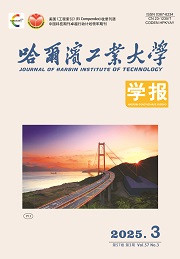| 引用本文: | 聂莹慧,李镜培.氯离子环境下RC桥墩时变抗震韧性分析[J].哈尔滨工业大学学报,2025,57(3):14.DOI:10.11918/202402021 |
| NIE Yinghui,LI Jingpei.Time-dependent seismic resilience analysis of RC bridge piers in chloride service environments[J].Journal of Harbin Institute of Technology,2025,57(3):14.DOI:10.11918/202402021 |
|
| 摘要: |
| 为揭示结构全寿命周期内考虑时间效应的失效规律,针对分区腐蚀桥墩时变抗震韧性问题,围绕不同桥墩分区的腐蚀环境、材料特性和腐蚀过程,开展了钢筋面积、钢筋屈服强度及混凝土抗压强度等材料性能的时变退化规律研究。根据计算结果建立桥墩分区腐蚀有限元模型,结合增量动力分析(IDA)得到墩顶位移响应,基于概率需求模型及损伤界限值构建了桥墩地震易损性模型。进而利用Pushover分析,将桥墩抗震性能随服役时间的退化作为灾前时变性能指标,灾后的性能指标通过量化地震作用导致的桥墩瞬间功能损失以及恢复程度来表征,提出了考虑分区腐蚀环境桥墩全寿命抗震韧性计算模型。结果表明:浪溅区钢筋锈蚀速度明显大于水下区及大气区,桥墩服役20 a到50 a的韧性退化值约为50 a到80 a的韧性退化值的2倍。因此在桥墩服役前期,决策者可依据实际提出合理的震前加固措施来增强抗震韧性。 |
| 关键词: 氯离子环境 桥墩 地震 易损性 韧性 全寿命 |
| DOI:10.11918/202402021 |
| 分类号:TU375 |
| 文献标识码:A |
| 基金项目:国家重点研发计划(2021YFB2600500) |
|
| Time-dependent seismic resilience analysis of RC bridge piers in chloride service environments |
|
NIE Yinghui,LI Jingpei
|
|
(College of Civil Engineering, Tongji University, Shanghai 200092, China)
|
| Abstract: |
| To reveal the failure patterns considering time-dependent seismic resilience of bridge piers under zonal corrosion conditions throughout their life cycle, this study examines the time-varying degradation of key material properties, including rebar cross-sectional area, yield strength, and concrete compressive strength, under different corrosion environments and processes. Finite element models of zonally corroded piers were then established based on these computational results, and incremental dynamic analysis (IDA) was applied to obtain pier-top displacement responses. A seismic vulnerability model was constructed using a probabilistic demand model and damage threshold values. Furthermore, through Pushover analysis, the pre-earthquake time-dependent performance indicator was defined by the deterioration of pier seismic capacity over service time. The post-earthquake performance indicators were characterized by quantifying the instantaneous functional loss of the pier caused by seismic actions and subsequent recovery. Accordingly, a full life-cycle seismic resilience calculation model was proposed for piers, considering the partitioned corrosion environment. The results show that the corrosion rate of rebar in the splash zone is considerably higher than that in the underwater and atmospheric zones. Moreover, resilience degradation value of the bridge pier over a service period of 20 to 50 years is approximately twice that of the degradation value observed over 50 to 80 years. Thus, during the early service phase of piers, decision-makers can propose reasonable pre-earthquake reinforcement measures based on actual conditions to enhance seismic resilience. |
| Key words: chloride environment bridge piers seismic vulnerability resilience full life cycle |







